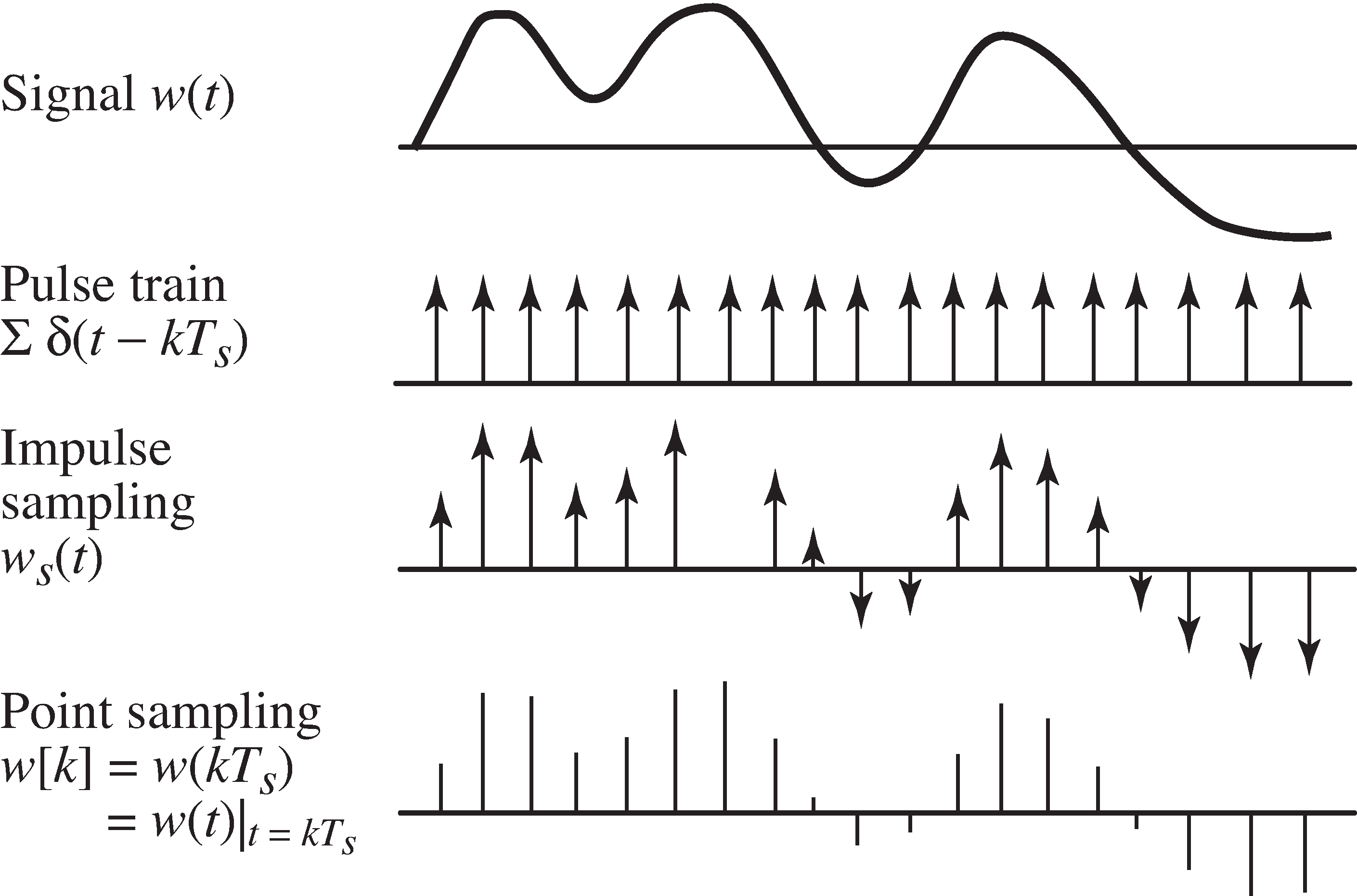| << Chapter < Page | Chapter >> Page > |
Sampling can be modelled as a point-by-point multiplication in the time domainby a pulse train (a sequence of impulses). (Recall [link] .) While this is intuitively plausible, it is not terribly insightful.The effects of sampling become apparent when viewed in the frequency domain.When the sampling is done correctly, no information is lost. However, if the sampling is done too slowly,aliasing artifacts are inevitable. This section shows the “how” and “why” of sampling.
Suppose an analog waveform is to be sampled every seconds to yield a discrete-time sequence for all integers . Observe the notation means evaluated at the time . This is also notated (with the square brackets), where the samplingrate is implicit. This is called point sampling because it picks off the value of the function at the points . One way to model point sampling is tocreate a continuous valued function that consists of a train of pulses that are scaled by the values . The impulse sampling function is
and it is illustrated in [link] . The effect of multiplication by the pulse trainis clear in the time domain. But the relationship between and is clearer in the frequency domain, which can be understood by writing as a function of .

The transform is given in [link] . With , this is
Thus, the spectrum of the sampled signal differs from the spectrum of the original in two ways:
Sampling creates an infinite sequence of replicas, each separated by Hz. Said another way, the process of sampling in time creates a periodicity in frequency,where the period is defined by the sampling rate.Readers familiar with Fourier series will recognize this as the dual of the property thatperiodic in time is the equivalent of sampling in frequency. Indeed, [link] shows why the relationships in [link] hold.
[link] shows these replicas in two possible cases. In (a), , where is the bandwidth of , and the replicas do not overlap. Hence, it is possible to extract the one replica centeredat zero by using a lowpass filter. Assuming that the filtering is without error, is recovered from the sampled version . Since[2]Be clear about this: The analog signal is sampled to give , which is nonzero only at the sampling instants . If is then input into a perfect analog lowpass filter, its output is the same as the original . Such filtering cannot be done withany digital filter operating at the sampling rate . In terms of [link] , the digital filter can remove and reshape the frequenciesbetween the bumps, but can never remove the periodic bumps. the transform is invertible, this meansthat can be recovered from . Therefore, noloss of information occurs in the sampling process. This result is known as the Nyquist sampling theorem,and the minimum allowable sampling rate is called the Nyquist rate .

Notification Switch
Would you like to follow the 'Software receiver design' conversation and receive update notifications?